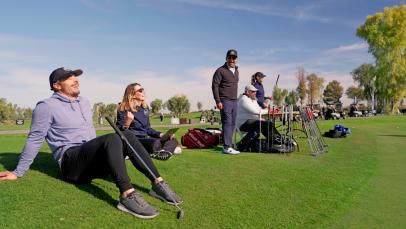equipment-data insights
Arccos Says: 5 fascinating equipment insights for the Hot List
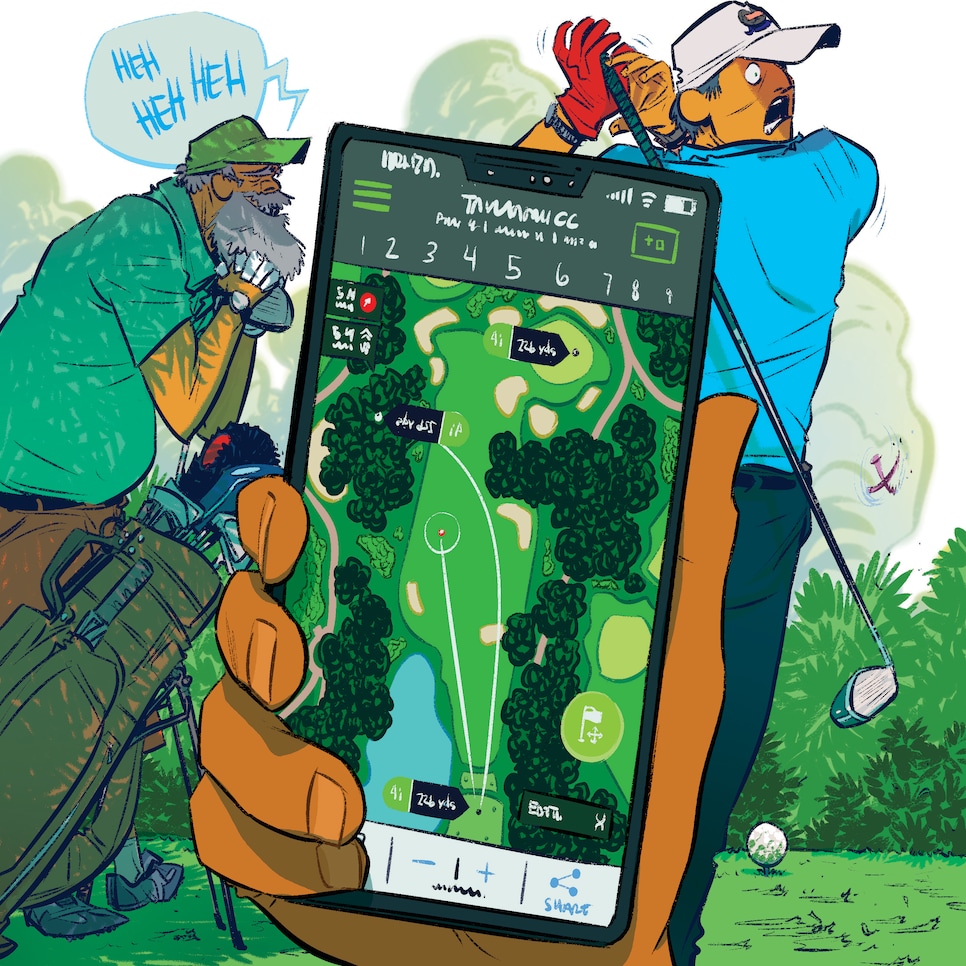
Illustrations by Nathan Fox
Equipment, and increasingly the selling of equipment, is about data and statistical analysis. There is no shortage of advanced technology to analyze how clubs work—and how they work for you (visit a qualified clubfitter if you want to get clubs optimized for your game). However, what about the data we have on what modern clubs are doing for average golfers? Well, for that, there is no better source than the GPS sensor-driven stat-tracking app from Arccos Golf. To date, Arccos sensors have recorded more than 600 million shots from average golfers across the planet. Together with Arccos, we’ve dug up a few equipment-related nuggets from the database. They’ll be labeled “Arccos Says” in the pages ahead, and to get things started, here’s a quick one about the decline of distance and the increase in accuracy as you age.
According to Arccos, as we move from our 20s to our 60s, we lose almost 50 yards in distance. Even more distressing, the bulk of that drop (about 35 yards) happens after age 50. What we lose in power, however, we gain in accuracy. Arccos data reveals that players in their 20s and 30s hit the fairway barely 40 percent of the time. However, golfers in their 60s and 70s are hitting more than half their fairways, and those in their 70s hit the short grass 55 percent of the time. As for that loss in distance, maybe oldsters should take heart from the ageless Bernhard Langer. At 65, Langer’s driving-distance average in 2022 was nearly 272 yards. That’s longer than his driving distance when he won his first Masters at the age of 27.
Hybrids beat their comparable irons head to head
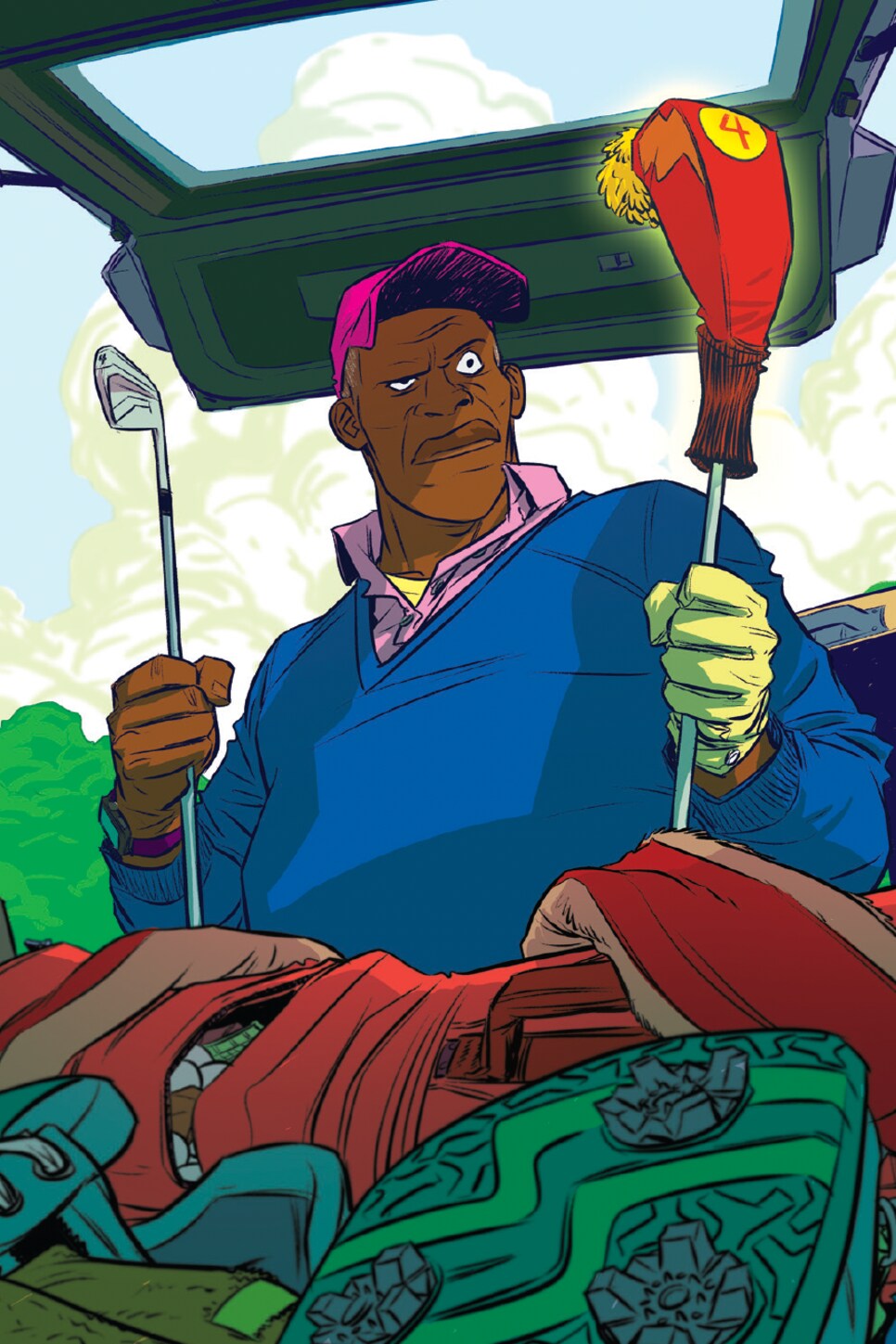
Are hybrids the smarter choice over the corresponding irons they replace? According to Arccos Golf, the stat-tracking app, the answer is yes for just about all handicaps and for every loft. Golfers from scratch to 25-handicappers who hit a 3-, 4- or 5-hybrid were 87 percent more likely to hit the green than with the corresponding iron.
For the higher-handicap groups (15 to 20 and 20-plus), a hybrid is always a better choice than a 3-, 4- or 5-iron. Interestingly, the advantage is even greater with the higher-lofted shots (5-hybrids versus 5-irons). For single-digit players, however, the advantages of a hybrid over a long iron aren’t as drastic.
All that said, hitting the green with anything that requires a low-lofted club is always more challenging. The average green in regulation for both 4-hybrid and 4-iron shots for all players was about 1 in 6. In fact, the 0 to 5-handicappers were the only group to hit the green from long range with any club more than 30 percent of the time—with a 5-hybrid, of course.
To maximize distance, use a tee with an iron on par 3s
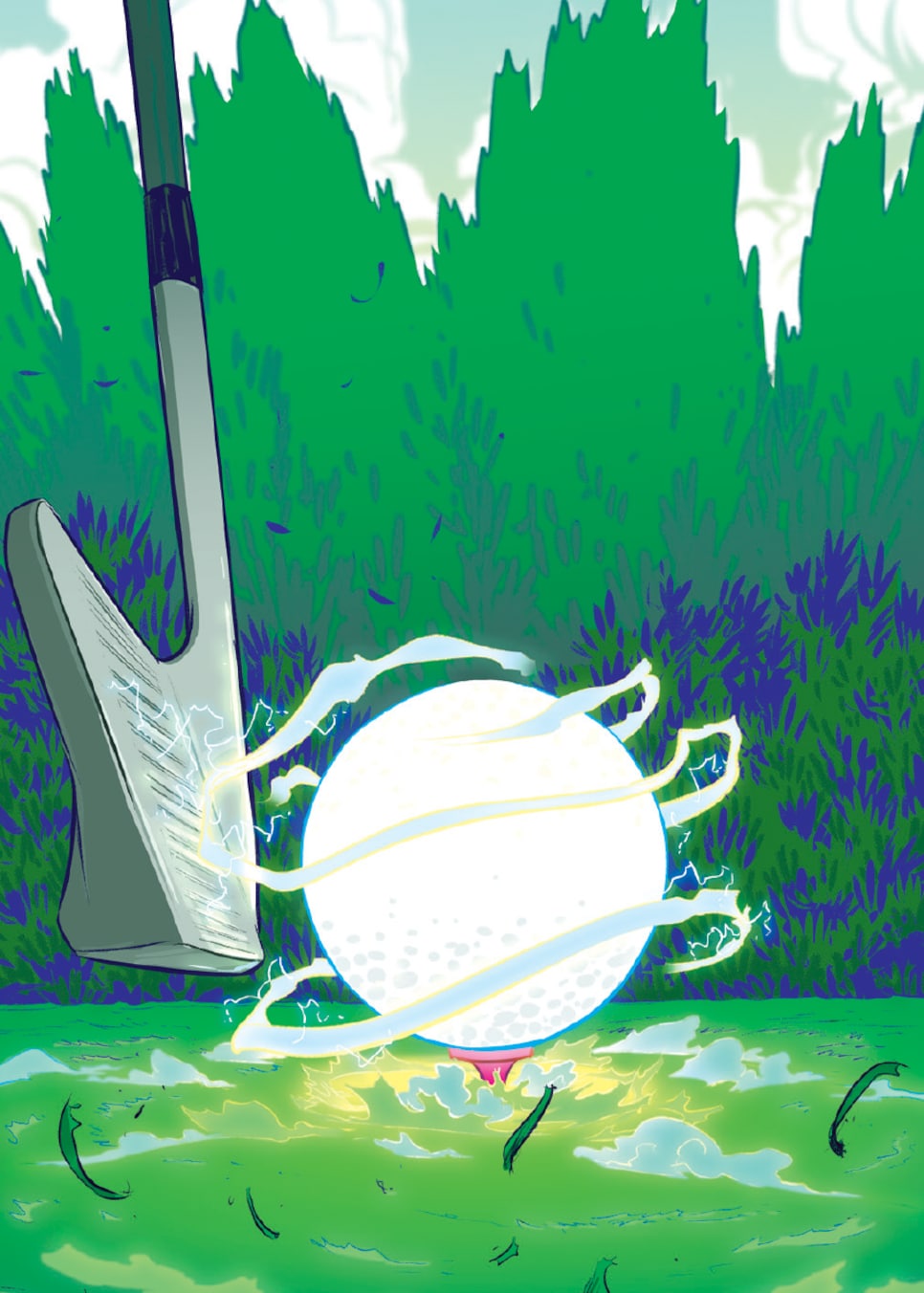
It’s a flex move to walk onto the tee box of a par 3 and just drop a ball, prop it up on a nice tuft of grass and swing. It’s also about as dumb as trying a hero shot through the trees. Data from Arccos Golf, the stat-tracking app, reveals the distance golfers of all levels gain from hitting an iron off a tee versus fairway-height grass is significant.
Taking the data from all players using all irons, the gain is al- most 12 yards—143.4 yards from grass and 155.3 yards off the tee. That’s a full club less into the green. It’s also nearly universal regardless of the iron—no iron from 3-iron to 9-iron showed less than a nearly 10-yard increase. Does the extra distance translate into more greens hit? You bet it does. Greens in regulation for all shots from fairway-type grass for all handicap groups combined was 36.2 percent. When using a tee, it jumps to 40.7 percent.
Erika Larkin, director of instruction at the Stable at Creighton Farms in Virginia and a Golf Digest Top 50 instructor, says anytime you can use a tee, do it.
“Getting the ball off the ground for those par-3 iron shots takes the turf out of play and reduces the chance for a fat or thin miss,” she says. “If you have a tendency to release the club too early or scoop at the bottom of your swing, hitting off a tee is a big help. Don’t be too proud to tee it up.”
Let skill level determine your greenside approach
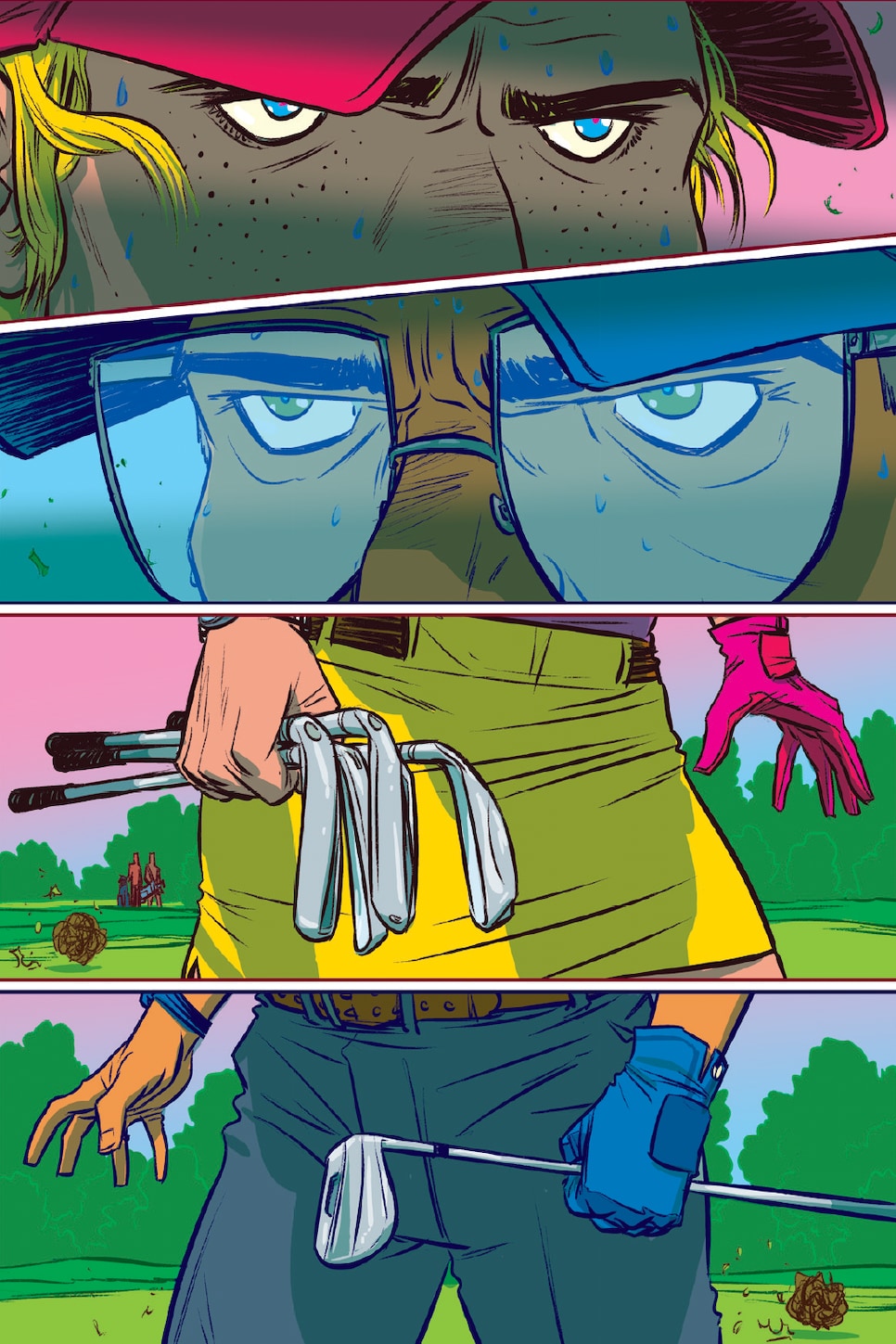
It’s a debate golfers have with themselves all the time: Should I use fewer clubs around the greens for all short-game shots or really mix it up?
The data from Arccos Golf, the stat-tracking app, is definitive in its recommendation: It depends how good a player you are. Better players (10-handicappers or lower) perform better using a variety of clubs rather than fewer clubs. Higher-handicappers, however, fare better when focusing on fewer clubs around the greens. The data shows scratch players did best when using five to six clubs for short-game shots but performed far worse when using only about three clubs.
The reason is that scratch players typically have good short-game skills and can use different lofts to their advantage. The reverse is true for higher-handi- cappers. Unlike better players, less-skilled golfers probably benefit more from familiarity than attempting to execute a variety of short-game shots.
“In my experience, 15-handicappers and above have more swing thoughts than lower-handicappers. That means they are trying to remember more over every shot,” says Molly Braid, teaching professional at West- moor Country Club in Wisconsin and a Golf Digest Best in State instructor. “To perform better, we know thinking is the last thing we need to do more of. In this instance, the fewer clubs used the better.”
Braid suggests using the same club to keep it simple around the greens for those less skilled. “To hit the ball lower with more roll, set up with the feet closer together and weight toward the target. This will allow you to keep the clubface square or a little closed,” she says. “If you want to hit the ball higher, stand slightly wider and take some pressure off the lead foot. This will promote a shallower swing path that helps get the ball up. It’s simple, but effective.”
Even scratch players take 31 putts per round

The Arccos Golf stat-tracking app breaks down its consumer data into four parts: driving, approach, short game and putting. Maybe not so surprisingly, good players are only a little bit better than less-skilled players on the greens. A scratch player takes roughly 31 putts per round, and a 15-handicapper takes an average of 35, according to Arccos data.
The 15, though, is losing nearly three times as many strokes to the scratch player before even reaching the green. Perhaps this is a sign to spend your daylight hours working on the full swing and short game. Then at night, get set up with a putting trainer like the Putt-Out to groove a good stroke so that you three-putt less often.
Know your three-putt zone to inform your practice

Is there anything more frustrating than a three-putt? No golfers are immune. According to data from the Arccos Golf stat-tracking app, even scratch players three-putt 20 percent of the time from more than 30 feet and more than a third of the time from 40 feet.
For perspective, the PGA Tour average for three-putting from long range is about 9 percent—and only about 1 percent of the time from 15 to 20 feet. The average scratch player three-putts from 15 to 20 feet four times as often as a PGA Tour player.
So what can you do about it? Try identifying the distance at which you start three-putting most often, and practice that length before moving out farther.
A 20-handicapper, for instance, starts three-putting 10 percent of the time when putts are longer than 10 feet. A 10-handicapper reaches that point at 20 feet, and the average scratch player starts to three-putt nearly 10 percent of the time at 25 feet.
Lag putting is about speed, but finishing off the shorties is about aim. According to research by putter designer David Edel of Edel Golf, 97 percent of golfers can’t aim their putter at the proper target. A fitter who uses putting analysis tools like Quintic or SAM PuttLab can show how much your aim is off and how that leads to other inconsistencies with distance control. Of course, a fitting might lead to a new putter as one solution. The downside? If that new custom-fit putter is really working, you’re going to end up using it less.




